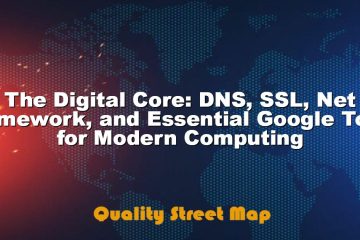What is UDP Monitoring? Understanding Connectionless Protocol Health

What Is UDP Monitoring And Its Importance?
Understanding what is UDP monitoring is crucial for maintaining the health and performance of network systems utilizing the User Datagram Protocol (UDP). Unlike Transmission Control Protocol (TCP), UDP is connectionless, meaning that it sends packets without establishing a connection. This protocol is often used in scenarios where speed is more important than reliability, such as video streaming and online gaming. As a result, monitoring UDP activity becomes critical to ensure that data packets are delivered efficiently and effectively, safeguarding the user experience from latency and packet loss.
UDP monitoring involves assessing the performance and reliability of data transmission over UDP connections. It helps identify issues such as packet loss, jitter, and latency, which can severely impact application performance. By understanding what is at the core of UDP’s functioning, organizations can implement strategies to mitigate risks and enhance the user experience. Real-time insights and metrics offered by UDP monitoring can proactively alert network administrators to potential problems, facilitating faster resolution and minimizing downtime.
An effective UDP monitoring system is crucial to optimize user experience by ensuring data packets are swiftly and reliably delivered.
Benefits Of UDP Monitoring
- Enhanced detection of packet loss and delays
- Improved network reliability and performance
- Reduced latency for real-time applications
- Proactive identification of potential network issues
- Comprehensive insights into network traffic patterns
- Faster resolution of network-related problems
- Optimization of bandwidth usage
In conclusion, gaining insight into what is involved in UDP monitoring allows organizations to effectively manage and optimize their network infrastructures. The real-time alerts and comprehensive analytics not only assist in maintaining high service levels but also enhance operational efficiency. By utilizing these insights, businesses can strategically plan for capacity and scalability, aligning their network resources with organizational goals. Ultimately, UDP monitoring acts as a cornerstone for ensuring consistent and robust network performance in various environments.
Exploring Connectionless Protocols: How UDP Works
The User Datagram Protocol (UDP) is a fundamental part of internet architecture, often characterized as a connectionless protocol. In contrast to TCP, UDP is designed to send packets, or datagrams, without establishing a prior communication session. This means that it does not ensure packet delivery, order, or error correction, making it incredibly fast and efficient in specific use cases. To understand what is unique about UDP, it’s crucial to recognize its non-reliance on connection establishment and teardown processes, which significantly reduces the overhead.
While its speed is a significant advantage, UDP’s simplicity raises important considerations for network reliability and error handling. Essentially, UDP is better suited for applications where speed outweighs the need for complete data accuracy, such as video conferencing, online gaming, or live broadcasts. Acknowledging these characteristics aids in evaluating what is necessary for effective UDP monitoring and the implications on network health.
Analyzing Protocol Characteristics
Diving deep into UDP’s characteristics reveals its structure and operational methodologies. Unlike TCP, UDP operates without keeping track of data stream states. The absence of acknowledgment packets and connection maintenance results in less network overhead. This characteristic makes UDP scalable and ideal for real-time transmissions. It’s important to monitor packet loss, jitter, and latency to ensure optimal performance in connectionless systems. As UDP lacks built-in reliability features, network administrators often leverage additional protocols for error correction when reliability cannot be compromised.
Benefits Of Connectionless Protocols
Connectionless protocols like UDP offer several advantages that can enhance network performance in various scenarios. When exploring what is fundamental to UDP, three primary benefits come to light:
- Reduced latency due to instantaneous data transmission without connection setup.
- Lower overhead, making it ideal for performance-intensive applications.
- Scalability in supporting a vast number of client interactions without bottlenecks.
Despite the lack of integral error-checking mechanisms, these benefits underscore the importance of understanding how UDP can provide robust support under certain conditions. Network administrators should judiciously select UDP when high speed is an app’s primary requirement, keeping in mind the protocol’s inherent trade-offs.
Monitoring Network Health
Given UDP’s unique characteristics, effective monitoring becomes vital to maintain network health. Failure to actively monitor can result in undetected packet loss or high latency, degrading the user experience. Therefore, to ensure UDP-based systems operate flawlessly, consider the following Steps To Monitor UDP Effectively:
- Install monitoring agents on crucial network nodes to collect data on packet transmission.
- Utilize tools specialized for tracking real-time metrics like latency and jitter.
- Regularly audit log files and data packets for anomalies that indicate packet loss.
- Implement synthetic transactions to test network flow and identify bottlenecks.
- Customize thresholds and alerts to notify on surpassing critical performance metrics.
- Incorporate additional error-correction layers, if required, for significant data integrity.
- Use visual dashboards for an impactful, at-a-glance status of UDP traffic.
These steps are part of comprehensive UDP monitoring ensuring resilient and efficient network performance. Understanding what is essential in UDP management supports a proactive approach to troubleshooting and optimizing network operations.
Conclusion: Leveraging UDP For Optimum Network Performance
Incorporating UDP monitoring into your network strategy involves understanding what is critical for maintaining robust network performance. By focusing on the unique characteristics of the User Datagram Protocol, businesses can optimize their systems for swift data transmission. The connectionless nature of UDP allows it to send messages without prior communications, making it an ideal choice for applications requiring rapid, real-time data processing. Understanding these dynamics is paramount for network administrators aiming to harness UDP effectively.
To ensure optimum network performance, there are several strategic actions that organizations can undertake. Monitoring UDP traffic can help in identifying issues before they escalate, thereby minimizing potential disruptions. By embracing both proactive and reactive measures, businesses can maintain a high level of service quality. Below is a list of actionable steps that can be implemented to alleviate common network challenges and maximize UDP’s advantages:
Actionable Steps To Enhance Your Network
- Implement regular UDP performance audits to identify potential bottlenecks.
- Utilize network monitoring tools that support real-time data analysis.
- Train IT staff in recognizing and resolving UDP-based network issues promptly.
- Leverage redundancy by incorporating failover mechanisms in critical systems.
- Regularly update network infrastructure to support newer UDP updates.
- Consider utilizing hybrid protocols if specific use cases demand more reliability.
Network specialists must adopt a forward-thinking view, understanding not only what is evident currently but also anticipating future challenges and trends. This proactive approach involves not just monitoring UDP traffic, but also equipping teams with the knowledge to skillfully leverage its benefits. Leveraging technologies that mesh well with UDP, such as cloud services and IoT, can lead to more resilient and responsive networks.
Ultimately, leveraging UDP is about crafting a network that can seamlessly handle the demands of modern applications while maintaining an edge in efficiency and speed. “The key to network optimization lies not just in understanding existing protocols but in anticipating advancements within them,” emphasizes the need for continual learning and adaptation. By integrating these insights and strategies, organizations can position themselves at the forefront of network performance excellence.















